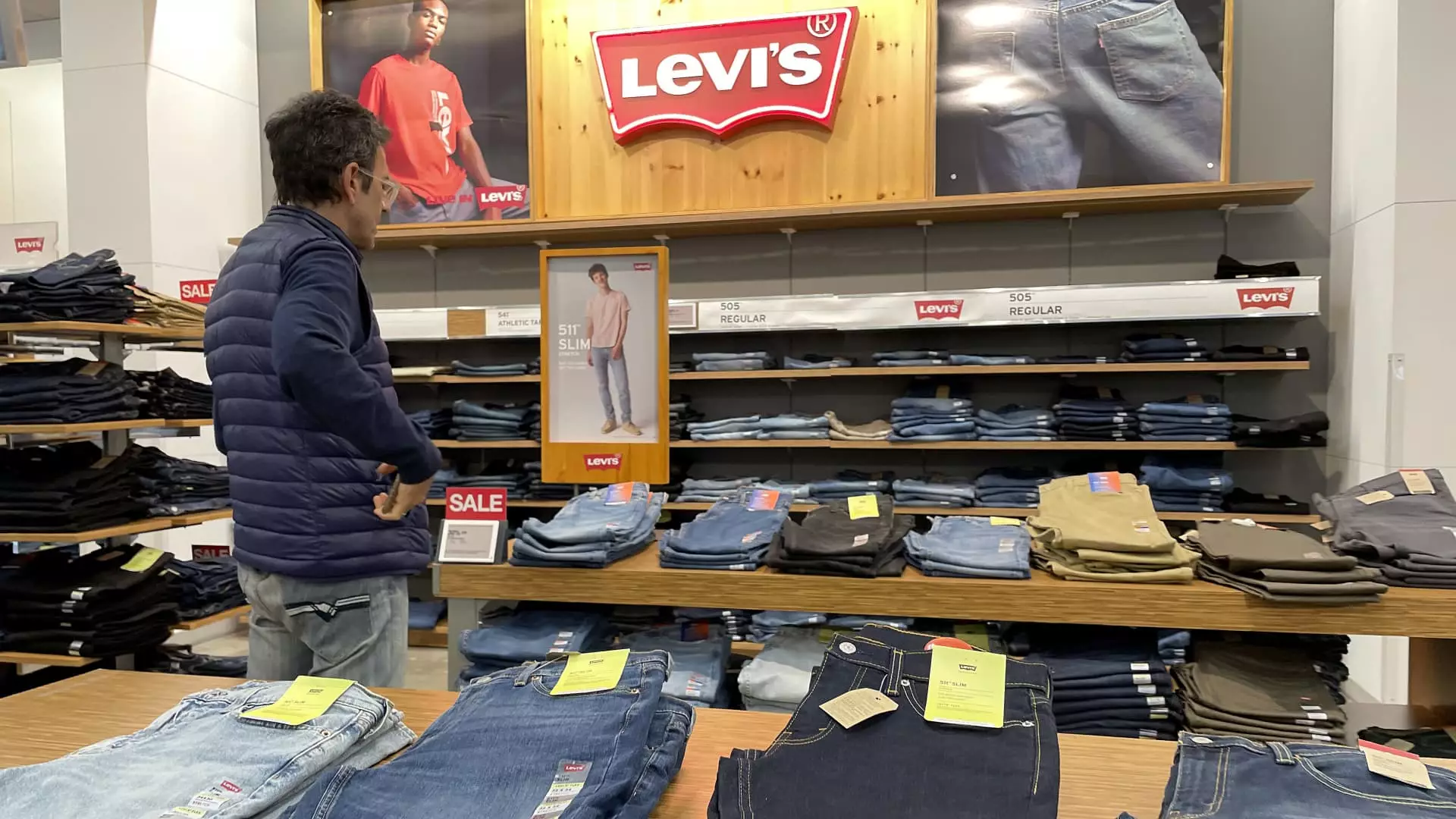In an evolving retail environment, Levi Strauss & Co. finds itself at a pivotal crossroads, grappling with both triumphs and challenges in the denim market. While the Levi’s brand boasts a commendable sales increase, the company struggles under the weight of its Dockers division, which is increasingly seen as a liability. As they navigate this intricate landscape, Levi’s is focusing on a revitalized business strategy that seeks to leverage cultural relevance and direct consumer engagement.
Levi’s brand saw a notable resurgence, reporting a 5% increase in sales—a significant achievement that marks the largest gain the company has experienced in two years. This uptick, however, contrasts with the company’s overall revenue, which remained stagnant at $1.52 billion. Analysts had anticipated better financial performance, leading to a disappointing 8% drop in the company’s stock during after-hours trading.
Interestingly, the quarterly earnings reveal a silver lining; Levi’s echoed a net income of $20.7 million, significantly up from the previous year’s $9.6 million. This foundational profitability is bolstered by an adjusted earnings per share of 33 cents, slightly exceeding market expectations. Yet, the overall message remains mixed, showcasing a disparity between the strong performance of Levi’s and the underwhelming contribution from its other brands.
Levi Strauss’s Dockers brand, aimed at capitalizing on the khaki pant trend since its inception in 1986, has faced fundamental challenges in recent years. Once a staple in American wardrobes, Dockers has struggled to maintain relevance in a rapidly shifting fashion landscape. Sales plummeted by 15%, resulting in $73.7 million for the quarter. This decline prompted Levi’s management to reevaluate their portfolio strategically, with the potential divestment of Dockers under serious consideration.
Harmit Singh, Levi’s Chief Financial Officer, recently articulated that exiting the Dockers brand could enhance the company’s overall financial health—alleviating volatility while allowing both the Dockers and Levi’s brands to flourish independently. This decision underscores the need for companies in the fashion industry to adapt swiftly to shifting consumer preferences and market dynamics.
With the rise of e-commerce, Levi’s has shifted its focus to reinforcing direct-to-consumer (DTC) sales, which are proving crucial for profitability. During the latest quarter, Levi’s recorded a 10% growth in its DTC segment, driven significantly by e-commerce sales, which surged by 16%. This evolution towards DTC sales is important not just for revenue generation but also for collecting valuable consumer data that informs product development and marketing strategies.
The company’s direct sales now account for 44% of total revenue, with ambitions to elevate that percentage to 55%. This strategy is bolstered by leaner operations, reduced cotton costs, and stronger product offerings that require fewer markdowns. Consequently, the gross profit margins increased by 4.4%, indicating a positive trend that should be nurtured and expanded.
An integral part of Levi’s strategy is its commitment to cultural relevance. The recent partnership with Beyoncé exemplifies this approach, as the pop icon embodies a connection to the brand’s heritage and contemporary appeal. The marketing campaign featuring Beyoncé wearing the iconic 501 jeans reaffirms Levi’s role in popular culture while leveraging the star’s influence to attract new consumers.
This strategic alignment with celebrity culture is more than just a marketing gimmick; it emphasizes the need for brands to resonate with diverse audiences and connect authentically. Levi’s successful navigation of this cultural terrain may prove to be an essential differentiator as they seek to cement their market presence.
Diving deeper into regional sales performance reveals complex dynamics at play. In Europe, Levi’s exceeded expectations with revenues of $406.6 million, showcasing the strength of its brand in that market. Conversely, the Americas and Asia fell short of analyst predictions, with sales hindered by external issues, including a cybersecurity breach of a key retail partner in Mexico.
In Asia, a challenging macroeconomic environment has dampened sales, with a leadership change initiated to better navigate this complex market, emphasizing long-term optimism despite current hurdles.
As Levi Strauss & Co. maneuvers through both the opportunities and challenges inherent in the deeply competitive apparel landscape, the spotlight now turns to the brand’s potential transformation. While its core denim heritage remains a central focus, the company must strategically divest from lagging brands, reinforce direct-to-consumer channels, and strengthen its ties to cultural narratives. This multifaceted approach will be vital in ensuring Levi’s resilience and continued relevance in an ever-changing fashion industry.

